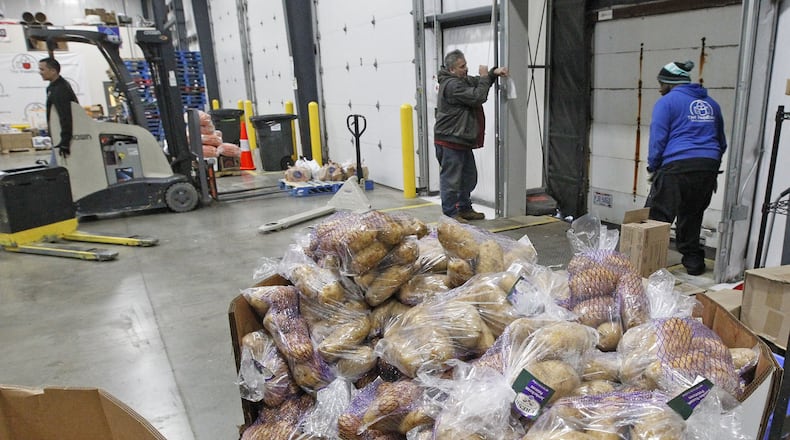The Foodbank in Dayton receives nearly 2 million pounds of food from the U.S. government every year, and storage costs amount to about $14,000 a month, according to spokeswoman Lora Davenport.
TRENDING: Feds say local woman made $2.5M in sex-for-money scheme
The burden of those costs fell on the local nonprofit that serves Montgomery, Greene and Preble counties when the government shutdown began Dec. 22, Davenport said.
“The handling fees will not be paid for … We will take the initial hit until the government shutdown is taken care of,” Davenport said.
In Springfield, up to $200,000 a year is paid for food storage costs, which amounts to 25 to 30 percent of the monthly budget for Second Harvest Food Bank, according to Executive Director Tyra Jackson.
“That will possibly cause cash-flow issues,” Jackson said.
Second Harvest Food Bank distributes food to pantries in Clark, Champaign and Logan counties. They also feed about 1,100 seniors who qualify for assistance under the CSFP.
Both food banks anticipate a higher demand for free food as furloughed employees use what money they have to cover housing and medical needs.
“We want to let those people who are furloughed know that it’s not a problem coming here,” Jackson said. “That’s why we’re here, if they need additional assistance … They will be able to keep the lights on, medicine in the cabinet and a roof over their heads.”
Those who qualify for the Supplemental Nutrition Assistance Program, formerly known as food stamps, will continue to receive benefits this month, according to information provided by Feeding America spokeswoman Heather Janik.
“Problems will begin should the shutdown extend into February, which we are concerned looks increasingly possible,” Janik said. “While there is not presently a disruption in benefits, it’s important to be cognizant of the administrative nightmare state agencies are facing due to uncertainty.”
There is a $3 billion reserve for SNAP benefits, but monthly costs for the program are approximately $5 billion, which means “at some point in the coming weeks, the Agriculture Secretary would have to begin telling states how to reduce February SNAP benefits,” according to Janik.
Thousands of local students get free or reduced-price breakfast and lunch meals thanks to federally funded programs for low-income families. Every school district in the region has at least some students eligible.
Ohio Department of Education officials said Friday they have been monitoring the government shutdown, and have been “advised funding for child nutrition programs is in place at least through January,” according to ODE spokesman Dan Minnich.
President Donald Trump met with congressional leaders twice this week, but there were no signs of a deal being reached to reopen the government.
About the Author
